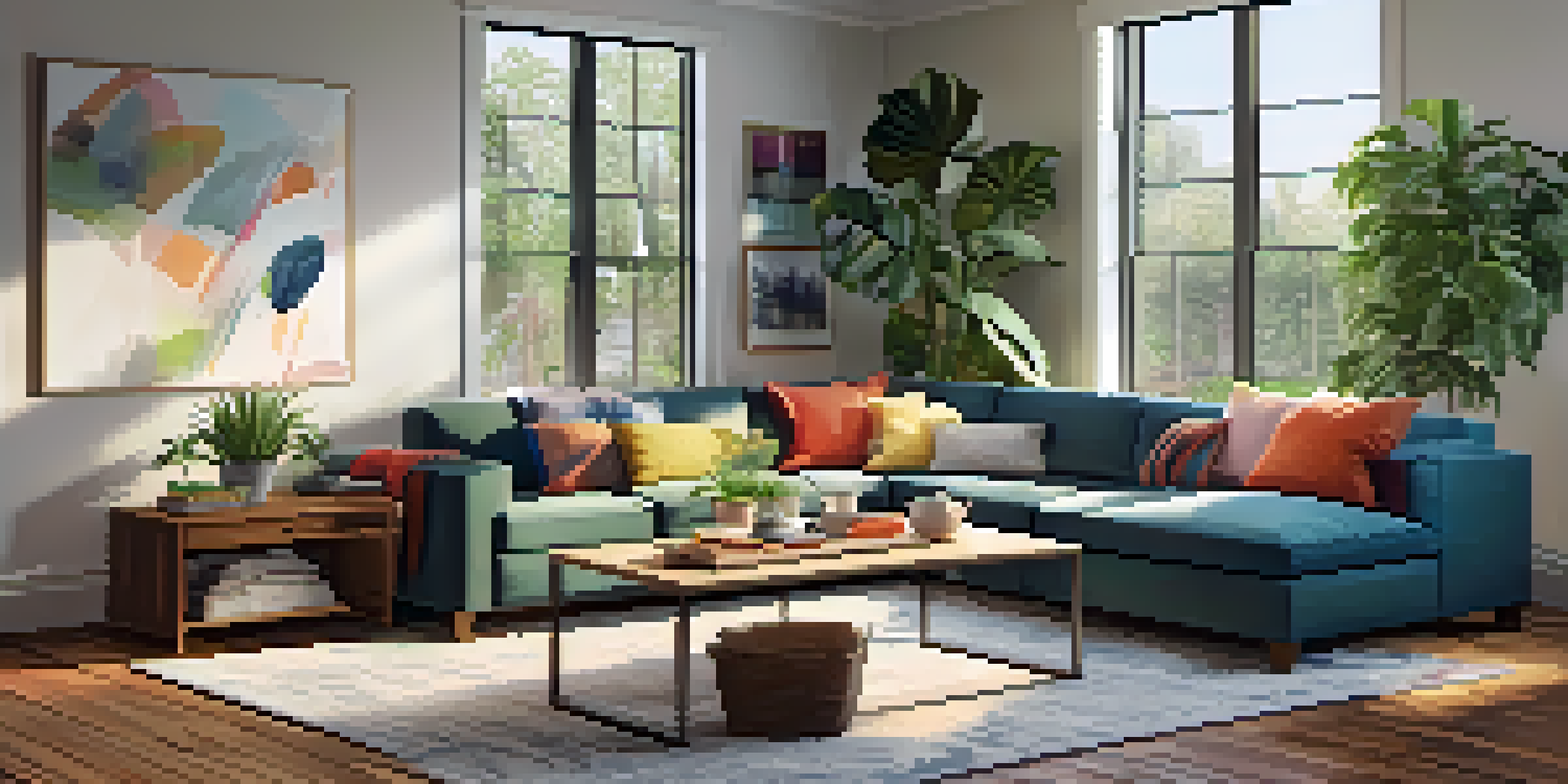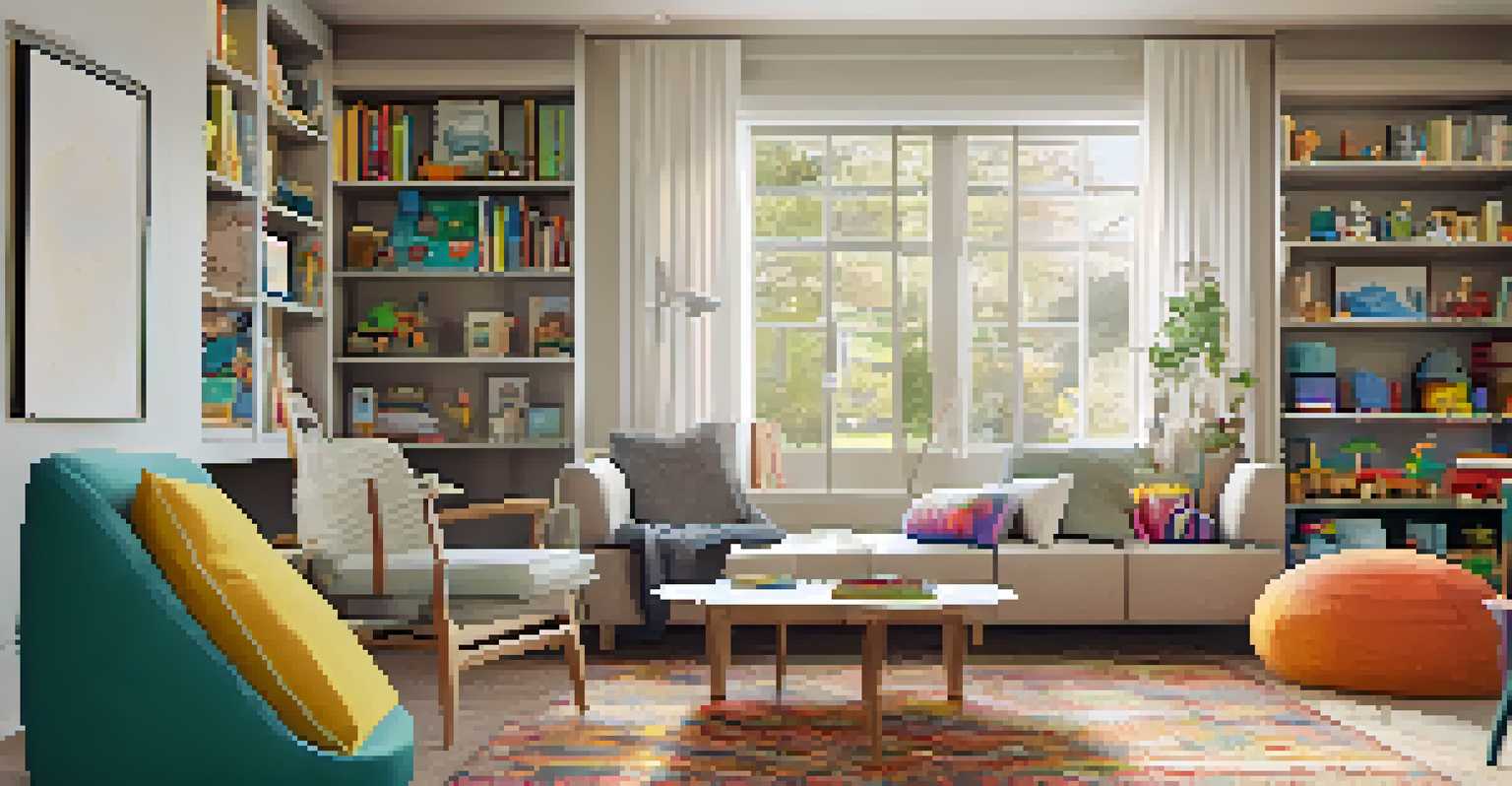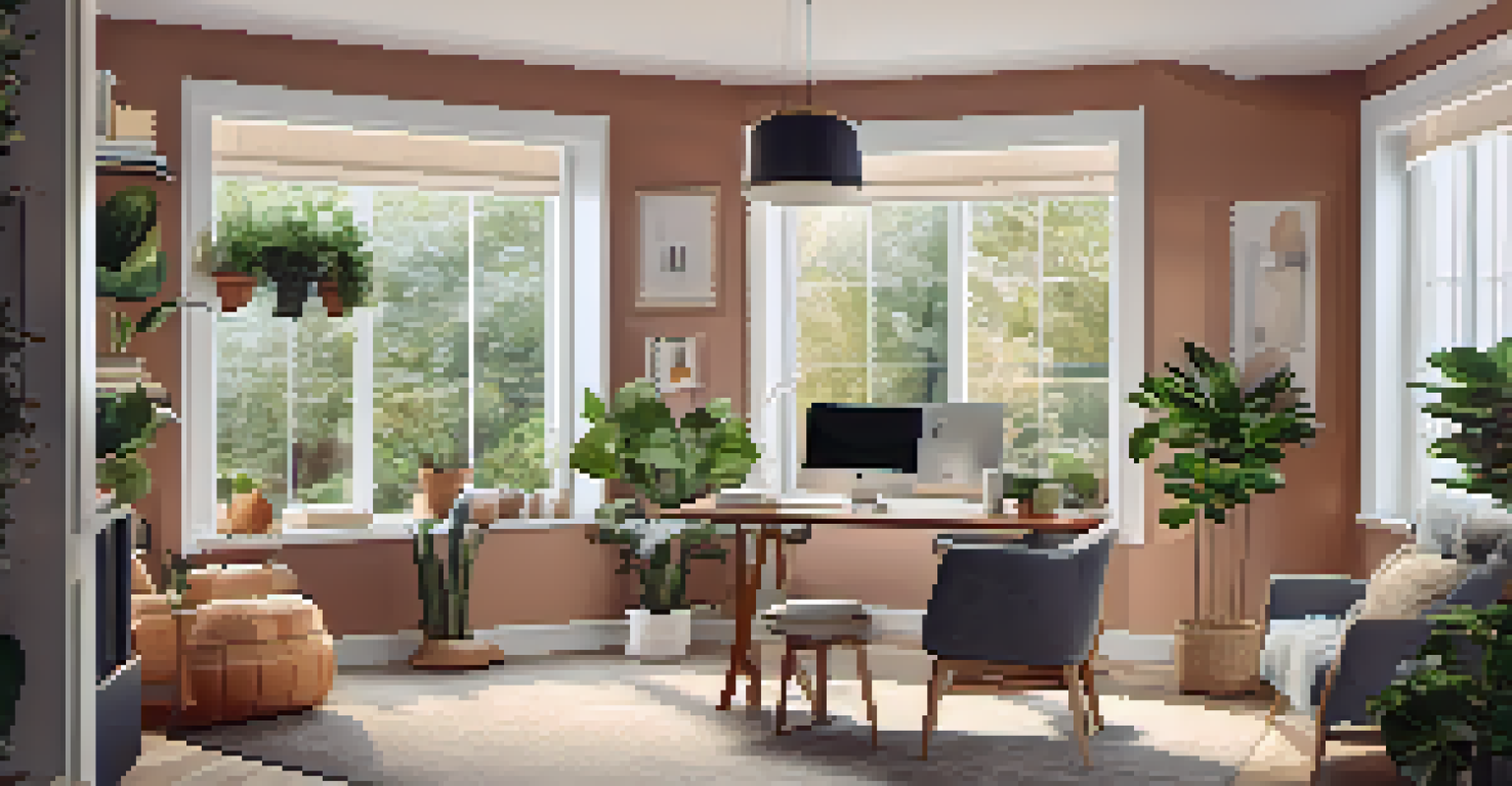Exploring the Role of Flexibility in Family Living Spaces

Understanding the Concept of Flexibility in Design
Flexibility in family living spaces refers to the ability to adapt areas for various needs and activities. Think of it like a Swiss Army knife; just as the knife offers multiple tools for different tasks, flexible spaces can serve various purposes. This adaptability is crucial for accommodating the diverse lifestyles of families today, from work-from-home arrangements to play areas for kids.
The best rooms have something to say about the people who live in them.
In practice, this could mean having a dining room that doubles as a workspace or a living room that can easily transform into a guest bedroom. The key is to create environments that are not only functional but also comfortable and inviting. When spaces can change as family needs evolve, they foster a sense of security and belonging.
Moreover, flexible design encourages creativity and spontaneity. Families can rearrange furniture or repurpose rooms to fit their mood or an occasion, leading to a more dynamic and engaging living experience.
The Benefits of Flexible Spaces for Families
Flexible living spaces provide numerous benefits for families, particularly in optimizing the use of available square footage. For instance, a single room can serve multiple functions: a cozy nook for family gatherings during the day and a serene reading corner at night. This versatility not only maximizes the space but also minimizes clutter.

Additionally, flexibility can enhance family interactions. When spaces can be easily reconfigured, family members are more likely to gather together, whether for meals, game nights, or simply to unwind. This promotes connection and strengthens bonds, which are vital for a happy family life.
Flexibility Enhances Family Life
Flexible living spaces adapt to various family needs, fostering comfort and connection.
Furthermore, as children grow and their needs change, flexible spaces can evolve with them. A nursery can transition into a study area, and a playroom can become a teen hangout, saving families from the hassle of constant renovations.
Design Elements That Promote Flexibility
Incorporating design elements that promote flexibility is essential for creating adaptable living spaces. For example, modular furniture, like sectional sofas or stackable chairs, allows for easy rearrangement to fit different activities. This means you can host a large gathering one day and enjoy a quiet movie night the next without feeling cramped.
Design is not just what it looks like and feels like. Design is how it works.
Another element is the use of multi-functional furniture, such as ottomans with storage or convertible coffee tables. These pieces not only save space but also add a layer of practicality that families can benefit from daily. They help keep living areas organized while providing additional functionality.
Open floor plans are also a significant trend in promoting flexibility. By removing walls, families can create a seamless flow between rooms, allowing for easier movement and interaction, making it feel more spacious and connected.
Creating Zones for Different Activities
Creating distinct zones within a flexible space allows for a variety of activities to coexist harmoniously. For instance, a large living room can be divided into a reading area, a play zone, and a work nook. Using rugs or furniture arrangement, families can visually separate these areas while maintaining an open feel.
This zoning not only keeps the space organized but also caters to different preferences within a family. Parents can work while children engage in play, all in the same room. This promotes a sense of togetherness while allowing for individual pursuits.
Design Elements for Adaptability
Incorporating modular and multi-functional furniture promotes versatile and organized living areas.
Moreover, establishing activity zones can help minimize distractions. When each area has a designated purpose, family members can more easily focus on their tasks, whether it’s studying, working, or relaxing.
The Role of Technology in Flexible Spaces
Technology plays a pivotal role in enhancing the flexibility of family living spaces. Smart home devices, like adjustable lighting and temperature controls, allow families to create the perfect ambiance for any occasion. With just a few taps on a smartphone, you can adjust the settings to transition from a lively family dinner to a calming movie night.
Moreover, technology like wireless charging stations and smart speakers can help declutter surfaces, keeping spaces tidy and organized. This functionality is particularly beneficial in multi-use areas where every inch counts.
The integration of technology also facilitates remote work and learning. Families can set up efficient home offices or study areas without sacrificing comfort or style, ensuring that everyone can thrive in their respective roles.
Incorporating Nature for a Flexible Environment
Incorporating natural elements into flexible living spaces can greatly enhance their adaptability. Plants, for example, can transform a room's atmosphere, making it feel more inviting and calming. They also improve air quality, contributing to a healthier living environment for the family.
Natural light is another crucial aspect. Large windows or skylights not only brighten up a space but also make it feel more expansive. Families can easily adapt their spaces to different needs, whether it’s hosting a gathering during the day or enjoying a cozy evening at home.
Technology Boosts Space Functionality
Smart home devices enhance the adaptability of spaces, making it easier to transition between activities.
Additionally, using natural materials like wood or stone can create a warm and inviting ambiance that can be styled in various ways to fit different moods. This connection to nature fosters a sense of peace and well-being in the home.
Future Trends in Flexible Family Living Spaces
As family dynamics continue to evolve, so too does the concept of flexibility in living spaces. Future trends are likely to focus on sustainability and eco-friendliness, with families seeking materials and designs that are both adaptable and environmentally conscious. This means embracing energy-efficient appliances and sustainable building practices.
Moreover, the rise of remote work will further influence how families design their spaces. Home offices will become more integrated into living areas, emphasizing the need for multifunctionality without sacrificing comfort or aesthetics.

Lastly, the importance of mental well-being is driving families to create spaces that promote relaxation and mindfulness. Future designs may incorporate more tranquil colors, cozy nooks, and areas specifically designated for unwinding, allowing families to recharge together.